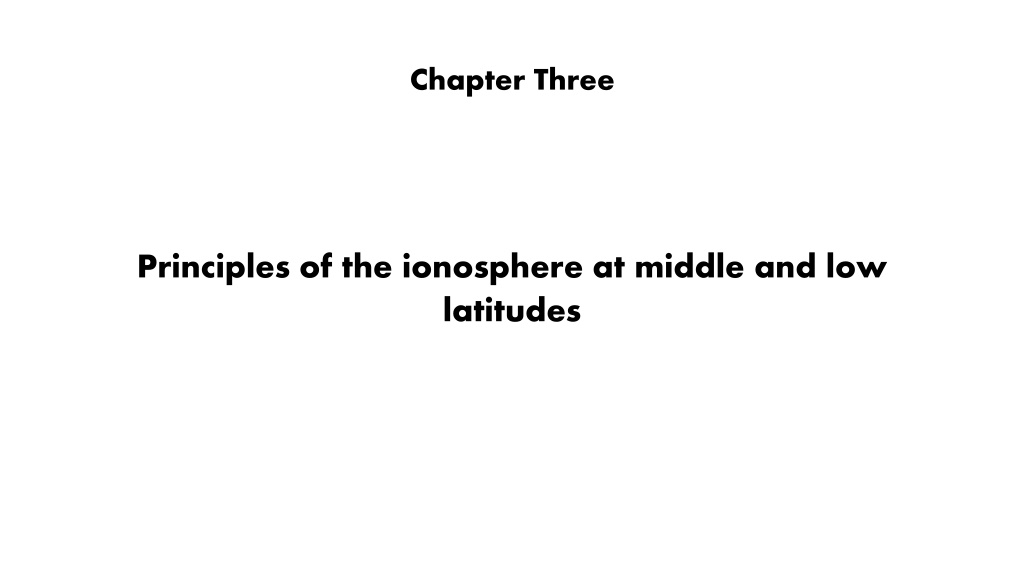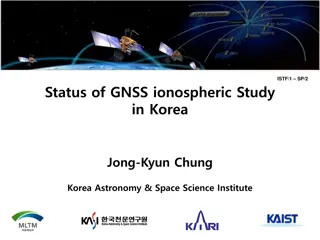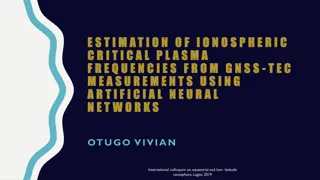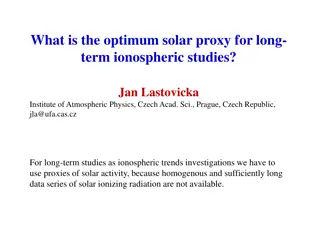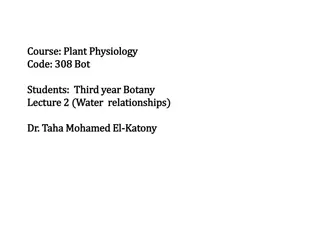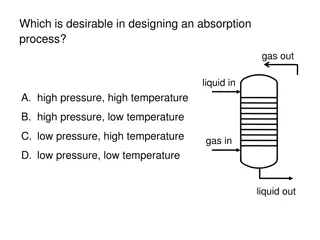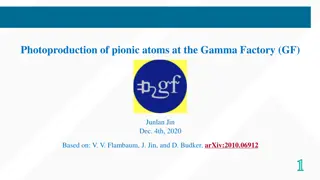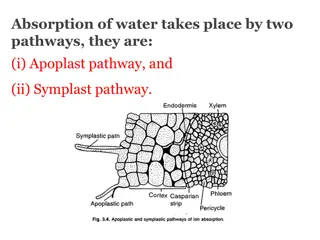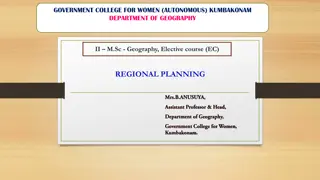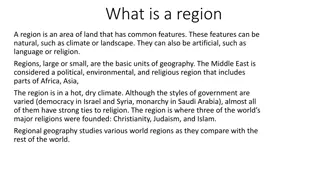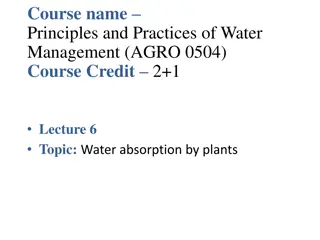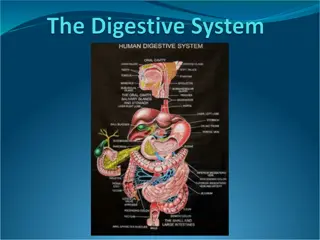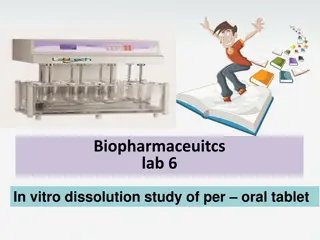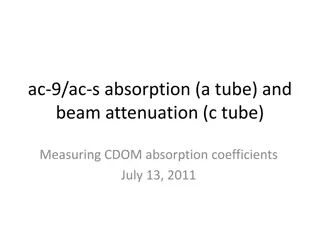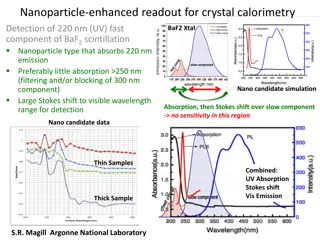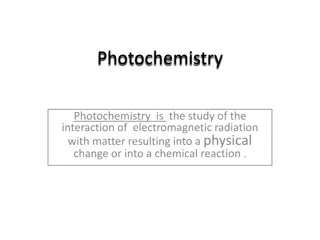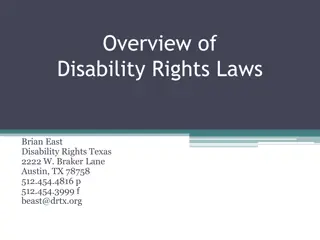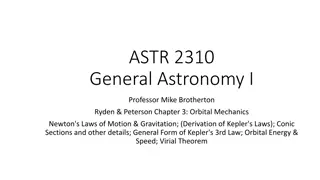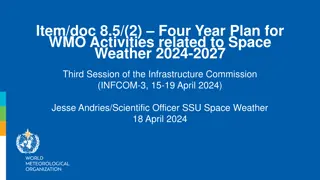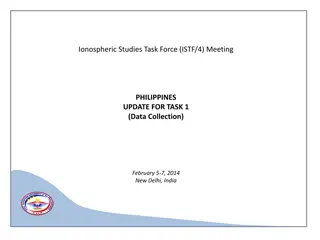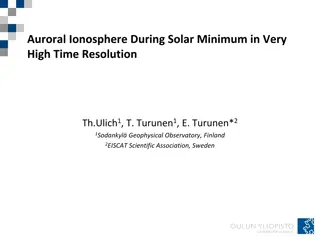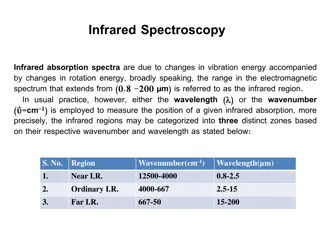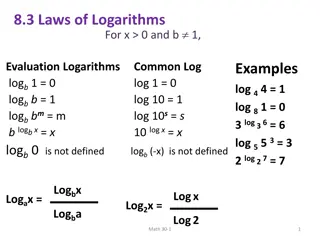Understanding Ionospheric Absorption Laws and Regions
The principles of the ionosphere at middle and low latitudes, Lambert-Beer exponential absorption law, and characteristics of E and F regions are discussed. The absorption of solar radiation, recombination reactions in different regions, and ionization processes are highlighted, providing insights into the behavior of the ionosphere at different altitudes and solar activity levels.
Download Presentation

Please find below an Image/Link to download the presentation.
The content on the website is provided AS IS for your information and personal use only. It may not be sold, licensed, or shared on other websites without obtaining consent from the author. Download presentation by click this link. If you encounter any issues during the download, it is possible that the publisher has removed the file from their server.
E N D
Presentation Transcript
Chapter Three Principles of the ionosphere at middle and low latitudes
Lambert-Beer exponential absorption law The transfer of solar radiation in the atmosphere does not involve emission sources or scattering into the original beam, and the process is well described by the, At any point in the atmosphere the intensity at wavelength is I ( ) and ( ) is the optical depth. The optical depth, ( ), a parameter that appears in the Lambert-Beer law specifies the attenuation of the solar irradiance by the atmosphere.
For a vertical sun, and at altitude z0it is, simply, ?? ? are wavelength dependent absorption cross section of species j Where ?? and the nj(z)s are the height profiles of their concentrations. For slant path
E and Fl regions E-region 1. The E region, peaks at 90-110 km. 2. EUV radiation between 800 and 1027 Ao(the ionization limit of O2) is absorbed by molecular oxygen to form O2+. 3. At the short wavelength end X-rays of 10-100 Ao(1-10 nm) ionize all the atmospheric constituents. 4. The main primary ions are ?2 observed to be ??+??? ?2 5. The intensity of solar X-rays varies over the solar cycle and they probably make little contribution to the E region at solar minimum. +,?2 +??? ?+, but the most numerous are again +.
6. Direct radiative recombination of the type Is slow relative to other reactions and is not significant in the E and F regions. Dissociative recombination, as 7. The main recombination reactions of the E region are therefore
F1 region 1. The Fl region at 160-180 km. 2. The Fl region is attributed to the most heavily absorbed part of the solar spectrum, between about 200 and 900Ao. 3. The primary reaction products are O2+, N2+, O+, He+, and N+, but subsequent reactions leave NO+and O+as the most abundant. 4. In the F region the principal primary ion is O+, which is first converted to a molecular ion by a charge exchange reaction:
The molecular ion then reacts with an electron as above, to give as the net result. Or, the atomic oxygen ions recombine with electrons with a third particle 5. F1 layer is most likely to occur at local daytimes in the summer of low solar activity.
F2-region 1. It extends from 200 to roughly 1000 Km and has a daytime maximum near 250 Km of about 5*105el/cm3. 2. As we move to higher altitudes the rate at which electrons and ions recombines decreases rapidly with height and the relaxation time at higher altitudes is much longer. 3. The F2 peak is formed because the loss rate decreases rapidly as the dominant term in L changes from ??2to N in the F2 region.
The most ionized gas presents in these heights F2-region is O+which is lost in the following two stages reactions as shown earlier (Charge transfer) (1) O++ O2=O + O2+ Or O++ N2= N + NO+ ( ion-atom interchange) (2) And then the new ions are dissociated in neutralizing collisions with the free electrons, e-+ O2+= O + O e-+ NO+= N + O 5. In the F2 region, where the number density of neutral molecules is considerable smaller, equations (1 & 2) becomes bottleneck reactions. (Dissociative Recombination)
The Upper Ionosphere 1. At altitudes above the F2 peak both the production and the loss of electrons tend to zero, and the only final term of continuity equation ??? (??). 2. Electrons and ions tend to diffuse as a body because their separation builds up an electric field which brings them back together. This phenomena called ambipolar diffusion. 3. Around 1000 Km O+is replaced by He+as the predominant ion, and at higher altitudes ( 2500 Km) He+is replaced by H+, i.e., by free protons. 4. The layer where helium ions dominate is often called heliosphere and the region above it is called the protonosphere.
Principles of airglow 1. Many of the photochemical reactions within the upper atmosphere are accompanied by the emission of radiation in the visible, infra-red or ultra-violet parts of the electromagnetic spectrum. These emissions comprise the airglow. 2. Aurora and airglow are often treated together, but there are some important differences. They are, for instance, energized from different sources. 3. The aurora is a high-latitude phenomenon, occurring most intensely during and after solar disturbances, which is energized by charged particles entering the atmosphere from the magnetosphere. It shows much structure in both space and time..
4. Airglow, is always present, covers all latitudes, and is virtually unstructured. On a moonless night ( ) the airglow contributes the major part of the light arriving from the sky, exceeding starlight in total intensity 5. R. J. Strutt, fourth Baron Rayleigh and son of the great Lord Rayleigh (the third Baron), pioneered airglow studies in the 1920s, and in his honour the unit of airglow emission rate is called the Rayleigh: 1R = 106photons/cm2s This measures the height-integrated emission rate, such as would be observed by a photometer situated at the ground. 6. The name 'airglow' actually dates from 1950. Airglow (and auroral) emissions are generated when an excited species returns to the ground state. There are various immediate causes, including :
(a) Radiative recombination reactions which emit a photon. (b) Reaction products in an excited state, which then radiate the excess energy in returning to the ground state (c) Excitation by hot electrons (following ionization) and by electric fields (d)Excitation by solar radiation, giving resonance emissions at the same wavelength. 7.Airglow measurements have several applications to upper-atmosphere science. 1. Neutral-air winds can be determined from the Doppler shift of an airglow line, 8. Derive the height profile of atomic oxygen.
